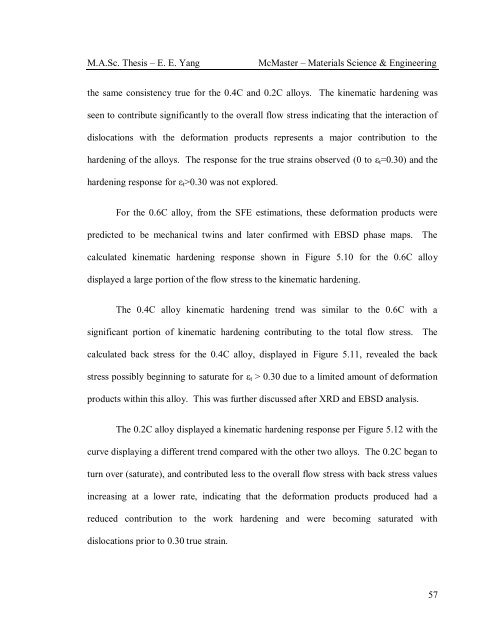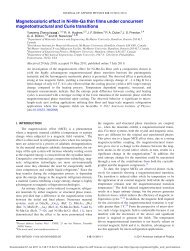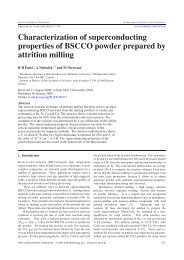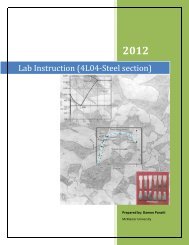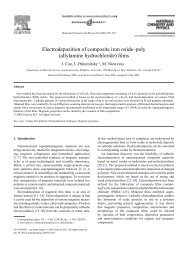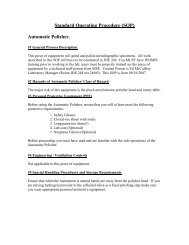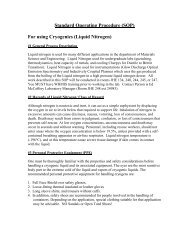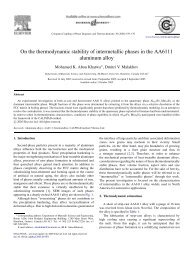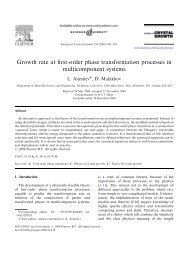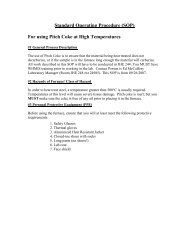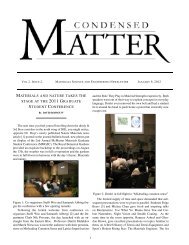the effect of carbon content of the mechanical properties - McMaster ...
the effect of carbon content of the mechanical properties - McMaster ...
the effect of carbon content of the mechanical properties - McMaster ...
You also want an ePaper? Increase the reach of your titles
YUMPU automatically turns print PDFs into web optimized ePapers that Google loves.
M.A.Sc. Thesis – E. E. Yang <strong>McMaster</strong> – Materials Science & Engineering<br />
<strong>the</strong> same consistency true for <strong>the</strong> 0.4C and 0.2C alloys. The kinematic hardening was<br />
seen to contribute significantly to <strong>the</strong> overall flow stress indicating that <strong>the</strong> interaction <strong>of</strong><br />
dislocations with <strong>the</strong> deformation products represents a major contribution to <strong>the</strong><br />
hardening <strong>of</strong> <strong>the</strong> alloys. The response for <strong>the</strong> true strains observed (0 to εt=0.30) and <strong>the</strong><br />
hardening response for εt>0.30 was not explored.<br />
For <strong>the</strong> 0.6C alloy, from <strong>the</strong> SFE estimations, <strong>the</strong>se deformation products were<br />
predicted to be <strong>mechanical</strong> twins and later confirmed with EBSD phase maps. The<br />
calculated kinematic hardening response shown in Figure 5.10 for <strong>the</strong> 0.6C alloy<br />
displayed a large portion <strong>of</strong> <strong>the</strong> flow stress to <strong>the</strong> kinematic hardening.<br />
The 0.4C alloy kinematic hardening trend was similar to <strong>the</strong> 0.6C with a<br />
significant portion <strong>of</strong> kinematic hardening contributing to <strong>the</strong> total flow stress. The<br />
calculated back stress for <strong>the</strong> 0.4C alloy, displayed in Figure 5.11, revealed <strong>the</strong> back<br />
stress possibly beginning to saturate for εt > 0.30 due to a limited amount <strong>of</strong> deformation<br />
products within this alloy. This was fur<strong>the</strong>r discussed after XRD and EBSD analysis.<br />
The 0.2C alloy displayed a kinematic hardening response per Figure 5.12 with <strong>the</strong><br />
curve displaying a different trend compared with <strong>the</strong> o<strong>the</strong>r two alloys. The 0.2C began to<br />
turn over (saturate), and contributed less to <strong>the</strong> overall flow stress with back stress values<br />
increasing at a lower rate, indicating that <strong>the</strong> deformation products produced had a<br />
reduced contribution to <strong>the</strong> work hardening and were becoming saturated with<br />
dislocations prior to 0.30 true strain.<br />
57


